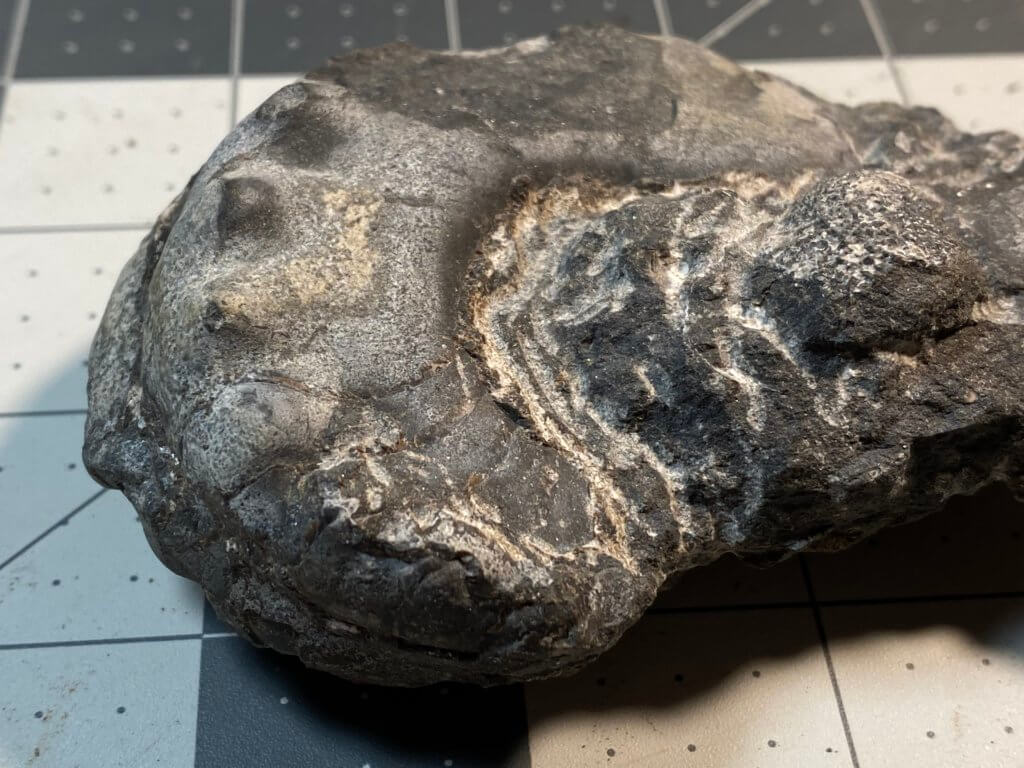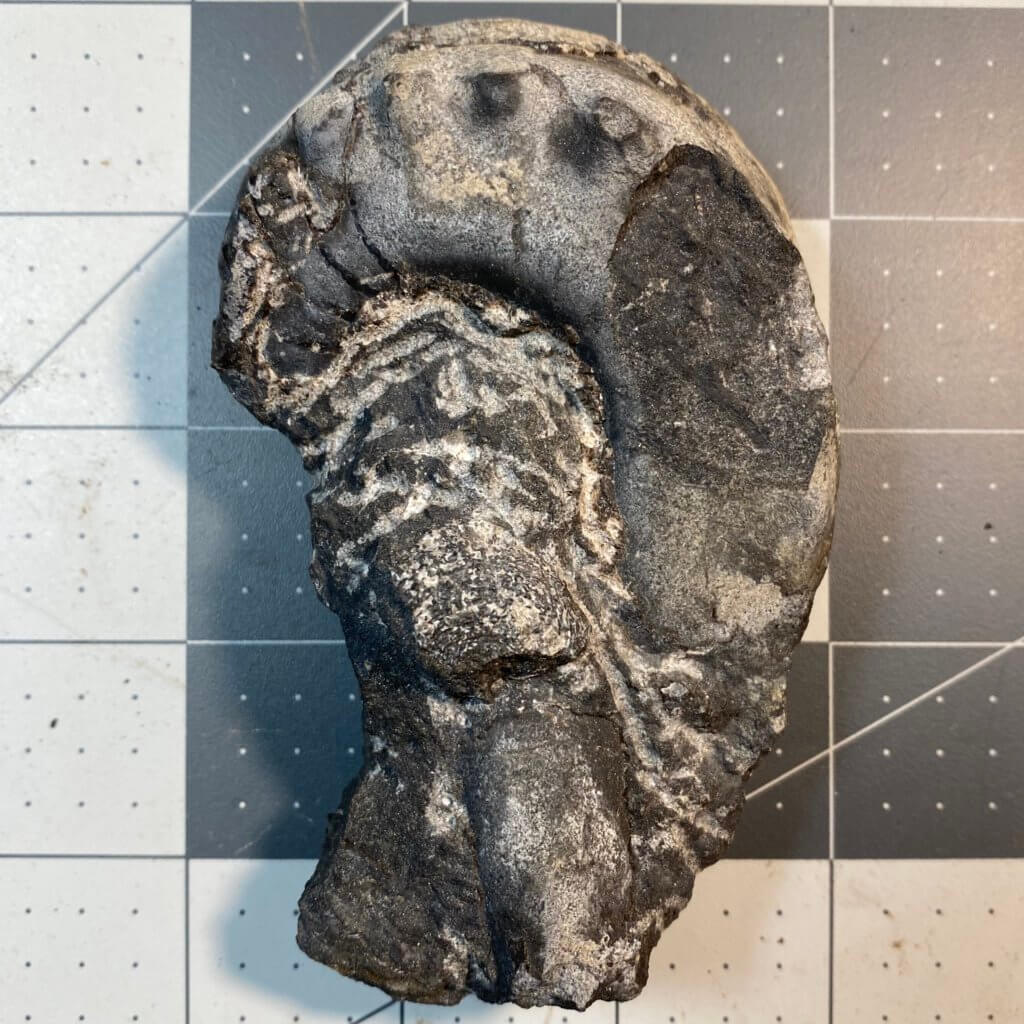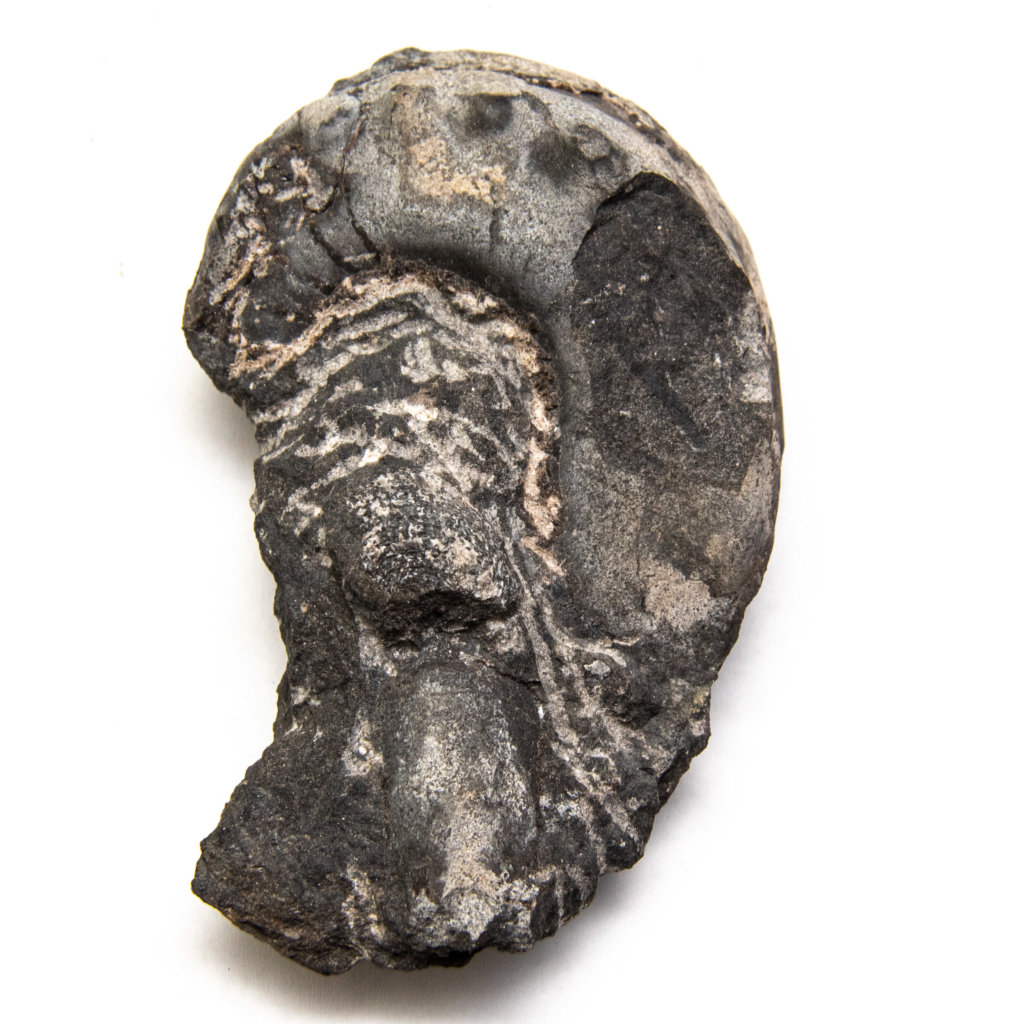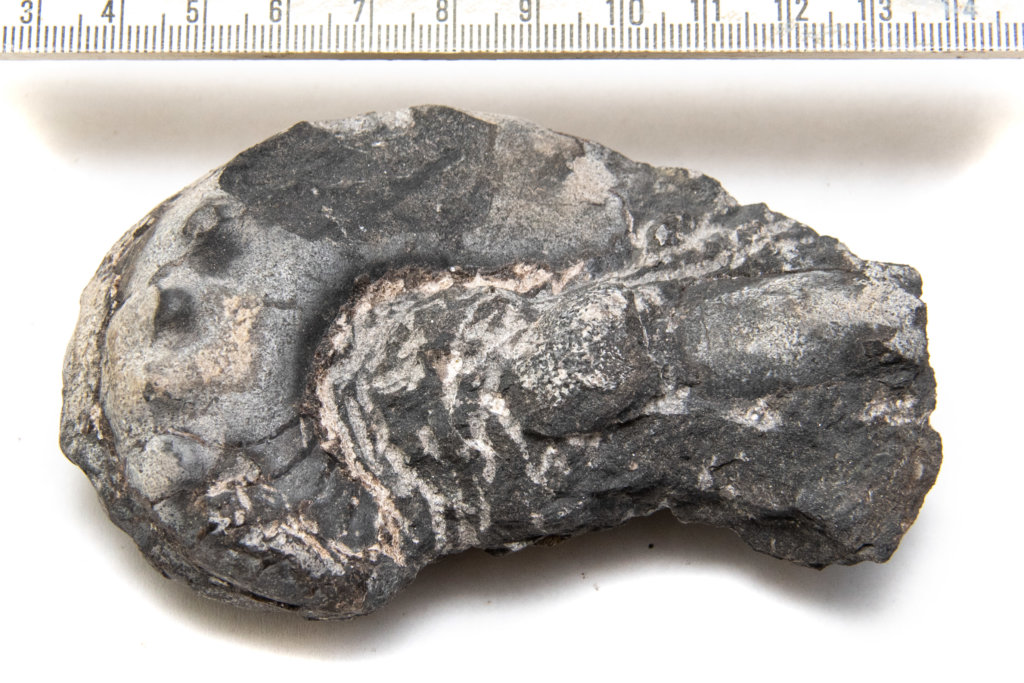Catalog Number: CG-0037
This speicmen is one of the best of the genus Metacoceras that I currently have. Metacoceras is one of the two most common species of cephalopod found in the Brush Creek Limestone. I have difficulty assigning a species. Even in the Treatise on Invertebrate Paleontology, there is a belief that there are too many species for what amounts to very slight differences:
More than 50 species have been assigned to Metacoceras, the principal criterion for their differentiation being the nature of ornamentation. As one would expect, the nodes vary in shape, size, numbers, and prominence. Distinction of species on the basis of slight differences in nodes is highly questionable; when the same criterion is used for separation of genera it is even more unrealistic.
Treatsie on Invertebrate Paleontology, Volume K. K390

The shell is said to be evolute coiled. This means the newer shell curls around the older shell portions at the same rate of curvature. As the creature grows the newer shell chambers expand in size.






Metacoceras is by far the most common medium-sized cephalopod found in the local limestone. There are several more species that can be found, however, as shown in the table below. P. knoxense is the most common smaller species.
| Species | Brush Creek | Pine Creek | Woods Run | Ames |
|---|---|---|---|---|
| Pseudortoceras knoxense | ✗ | ✗ | . | ✗ |
| Mooreoceras normale | ✗ | . | . | ✗ |
| Poterioceras curtum | ✗ | . | . | ✗ |
| Ephippioceras ferratum | ✗ | . | ✗ | . |
| Megaglossoceras sp. | ✗ | ? | . | . |
| Liroceras sp. | ✗ | . | . | . |
| Metacoceras cornutum | ✗ | ✗ | ✗ | ✗ |
| Metacoceras perelegans | ✗ | ✗ | . | ✗ |
| Tainoceras monilifer | . | . | ✗ | ✗ |
| Domatoceras sp. | ✗ | ✗ | ✗ | ✗ |
| Solenochilus brammeri? | ✗ | ✗ | . | . |
| Pennoceras seamani | ✗ | ? | . | . |
| Eoasianites sp. | ✗ | . | . | . |
| Schistoceras hildrethi | ✗ | . | ✗ | ✗ |
| Schistoceras missouriense | ✗ | . | . | . |
Miller & Unklesbay, 1942, The Cephalopod Fauna of the Conemaugh series in Western Pennsylvania, Annals of the Carnegie Museum

